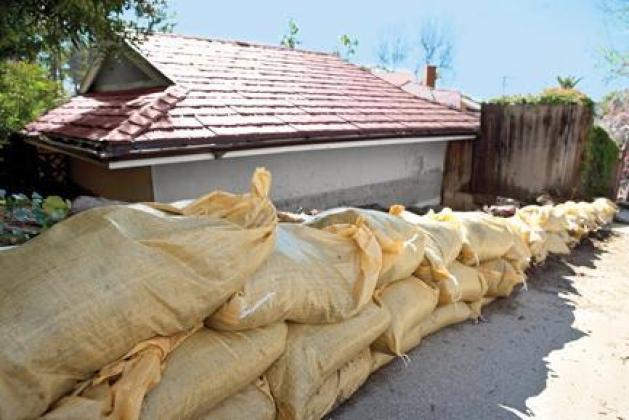
After more than eight years of planning, engineering studies, permitting and funding work, St. Martin Parish government does not intend to be prevented from building a flood wall to protect the Bayou Estates subdivision in Lower St. Martin Parish.
Engineer Mo Selah, of Professional Engineering and Environmental Consultants Inc. has led the multi-year evaluation and planning process to find a solution. He presented a description of the result at the Aug. 20 Parish Council Administrative/Finance Committee meeting.
The plan has been approved by the Army Corps of Engineers and grants totaling nearly $3.4 million have been secured from FEMA and the Community Development Block Grant program.
Protecting the consistently flood-prone subdivision in the Stephensville area, just north of Lake Palourde, has consumed hundreds of thousands of taxpayer dollars. Many years, parish crews and volunteers fill, deliver and stack as many as 30,000 sandbags in the subdivision when high water threatens.
Of the 297 subdivision homes, 80 are particularly prone to flooding. Land subsidence, nearing two feet in some areas since the beginning of development there, could add to that number. Flooding occurs when Bayou Long takes in rising flood water from the Atchafalaya River. That water rises in the dead-end canal that leads into the subdivision.
When that happens, storm drains have to be plugged, low houses have to be surrounded by sandbag walls and pumps have to be used to empty water and move it downstream into the Avoca Island Cutoff.
The approved plan calls for the construction of a “sheet pile” flood wall to protect the affected area on its north and east sides. A 30-foot wide flood gate would be built across the canal near the northeast end of the wall and would be closed during high water periods. There will also be an additional pump station added to drain the subdivision.
To work as designed, the wall must tie into the existing concrete bulkhead at that flood gate and at the end of the eastern part of the wall. And therein lies the problem.
Homeowners at the locations of the tie-ins are refusing to grant the servitudes needed. They object on the grounds that the wall and gate would spoil their view of the cypress swamp across the canal. Residents of that area are not the ones on the lowest ground.
Parish President Chester Cedars said he has had enough of the delays. “This project was permitted by the time I took office in November 2017,” he said, “and I understood we were ready to proceed. The efficacy and importance of this has not changed. We’ve responded to the objections and we’re going forward, period. It’s our duty.”
He added, “This problem is not just about Bayou Estates. This diverts resources that are needed elsewhere and the costs are borne by the whole parish.”
Selah said that if the project is delayed much longer and the parish does not show a resolve to see the project through, it stands to lose the grants. And rising costs over time could mean that the grant funding would no longer be sufficient.
Dist. 1 councilman Byron Fuselier, who represents Lower St. Martin Parish, said “Bayou Estates was the only area that flooded in March of this year. We sent 25,000 sandbags and plugged 10 drains. The cost to the parish was over $100,000 in that single incident.”
Lisa Nelson of Dist. 2 added “Time and time again we send people down there to cope with flooding. It’s hard to justify that when just a few people object to the
project that would solve
the problem.”
Dist. 5 councilman Chris Tauzin pointed out, “It spoiled some people’s view when the levee had to be raised after the Flood of 1927, but they still did it because it had to be done.”
The council voted unanimously to move forward with a lawsuit if necessary.
